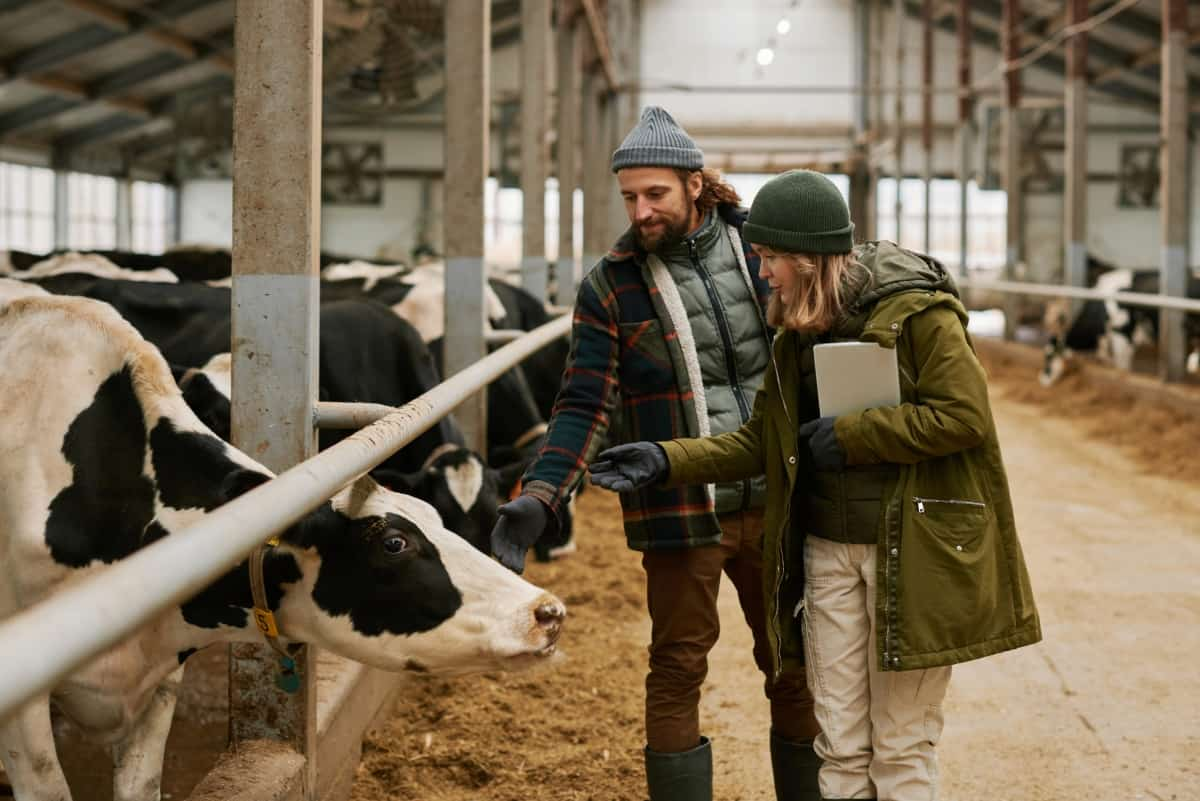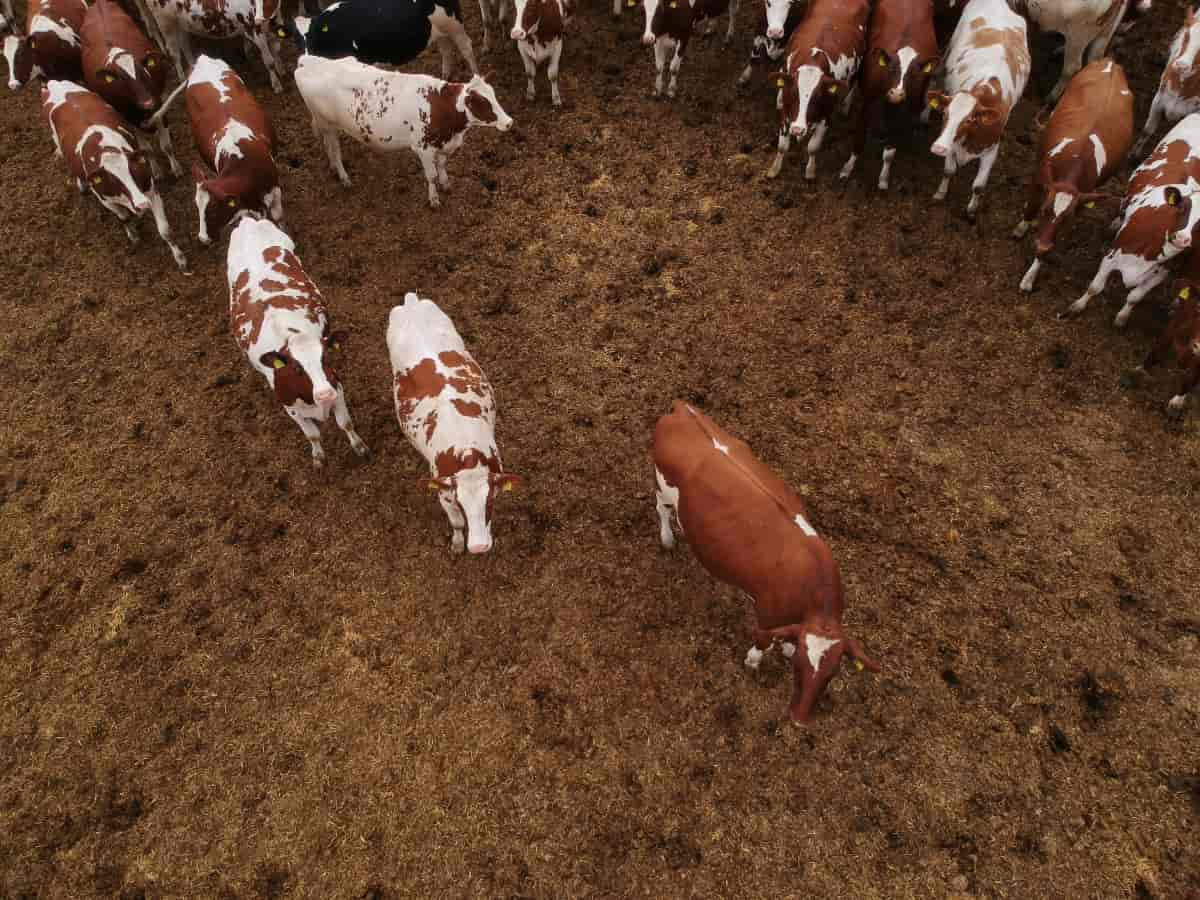Stress reduction during handling will help reduce sickness and enable cattle to return to feeding more quickly. The fear of handling stressors will likely have many detrimental effects on animal performance and health. It has been demonstrated on ranches and feedlots that making cattle accustomed to people on foot and horseback will produce calmer and easier-to-handle cattle. The first encounter between an animal and a new corral, person, or piece of equipment should be as positive as possible.

Performing a painful or aversive procedure for the first time may make it difficult to re-enter the facility. The improper handling of animals without considering their behavior may lower conception rates, reduce immunity and rumen function, increase health problems, and cause excessive shrinkage and bruising. It is possible for disease and injury to occur when cattle are processed and crowded in tight spaces.
Tips for Low-Stress Cattle Handling
- Cattle should be kept in visual contact with each other.
- A loading ramp and handling chute should be designed so that animals can’t see distractions outside the area where they’re working. Through the sides, cattle may be able to see moving objects and people, which may impede their progress.
- Observe and assess the cattle’s behavior and temperament before handling or moving them. Do not move them alone if they seem particularly flighty.
- Handling should be kept to a minimum. You should not continuously push them through races or be in their flight path all the time,
- Don’t overhandle cattle, only handle them when necessary, and give them plenty of time to recuperate.
- If cattle are not moving easily through alleys or chutes, check for chains, backstops, dogs, or people distractions.
- If you have light in the area where the cattle will be moved, you may be able to ensure that it is adequately lit.
- Cattle may balk at sudden color changes, so paint the handling facilities in a single uniform color.
- The hearing range of cattle is wider than that of most humans. However, they are able to locate the source of sound, just as humans are able to do. Their hearing is sensitive to high-frequency sounds. Remember, we can expect that loud noises should be avoided in working areas, but small noises can assist in moving livestock. Cattle may balk and resist moving forward if gates and other equipment are noisy.
- Cattle that are alarmed or overexcited are dangerous. Especially when they’ve just been moved into the yard, give them time to settle down. It will be much easier and safer to work with them.
- It is common for agitated cattle to bellow and paw the ground with their hooves when they become agitated. As well as their head and tail positions, cattle’s attitude is also revealed by their posture. You should be aware of these danger signs.
- There is no doubt that cattle have good memories. It doesn’t take them long to learn who frightens them and who treats them well. When castrated, weaned, and milked for the first time, they can get stressed. Taking care of them at those times will pay off in the long run.
- ‘Flight zone’ refers to the distance you can get before cattle start moving. When dairy cattle are routinely handled, their flight zone can be as small as 5 meters. By entering the cattle’s flight zone, you will get them moving. As you get closer, they will move away faster. You can control their movement speed by getting close to them. Similarly, stepping outside their flight zone will stop them from moving.
- Aim to keep cattle moving at a steady walking pace, rather than running or bolting, as it is easy to lose control of a mob or animal. Avoiding large gestures and movements, and minimizing unnecessary physical contact can help make a potentially stressful situation less stressful.
- There are two balance lines in cattle. In one case, they run across the shoulders, and in the other, they run along the backbone. Whenever you move through those lines up close, the animal will move the opposite way:
- The animal will move backward if you move forward alongside it.
- It will go forward if you go back.
- When you move to the left when you’re in front, it’ll move to the right.
In case you missed it: Watch for These 10 Common Cattle Diseases

- In cattle handling, your voice can be an invaluable tool. Cattle handlers who are good at calming and soothing their animals use their voices. Regardless of where you are, your voice helps the cattle locate you.
- Use a long stick (a waddy) or a length of pipe. Add a piece of cloth to the end to make a flag. When you wear a waddy, you appear larger. As a result, you can handle difficult animals more confidently.
- No matter what transportation mode you use, these handling principles apply. However, a mode change will likely cause a heightened fear response among the animals. As a result, animals will likely have a longer flight distance until they become accustomed to it. This must be considered, evidently.
- When pressure is applied to animals, the animal must move forward, or the person must move backward. After you get the desired response, release the animal’s pressure. When animals are constantly under pressure without releasing it, they become panicked. Applying pressure and releasing it is easy when working in the animal’s flight zone. The animals will remain calm if you use this method.
- The importance of consistency and repetition to cattle cannot be overstated. They perform best when they follow a routine. A few areas of consistency can be controlled, such as having the same people work the cattle, following the same routine when rounding them up, using the same holding area, working from the same side of the chute, and using the same movement techniques. Making the first experience through the chute positive is one of the ways to reduce stress in this area.
- Move small numbers of animals at a time, avoid overloading the crowd pen, remove electric prods, open anti-back gates, remove visual distractions that cause animals to balk, and reduce noise.
In case you missed it: How to Control and Treat Pasture Bloat in Cattle

Conclusion
Producers have long known that proper handling management based on previous experience and knowledge of animal behavior will reduce stress and behavior-related problems. Using low-stress handling techniques, cattle should walk or trot while being handled and start grazing or nursing shortly after being handled. The stress they experience during these stressful life events can be reduced using low-stress handling methods and efficient cattle movement.
- Ultimate Guide to Ossabaw Island Hog: Breeding, Raising, Diet, and Care
- Ultimate Guide to Juliana Pig: Raising Facts, Size, Diet, Care, and Lifespan
- Raising Lleyn Sheep: Disadvantages, Price, Uses, Characteristics, and Care
- Ultimate Guide to Meishan Pig: Breed Facts, Breeding, Raising, and Care
- Ultimate Guide to Teacup Pigs: Raising, Diet, Lifespan, Cost, and Care
- Guide to Raising Poll Dorset Sheep: Facts, Profile, Characteristics, Uses, and Care
- Ultimate Guide to Bighorn Sheep: Characteristics, Diet, Lifespan, Breeding, and Lifecycle
- Ultimate Guide to Raising Katahdin Sheep: Farming Facts, Breed Profile, Uses, and Care
- Ultimate Guide to Raising Oreo Cows: Belted Galloways Farming Facts, Profile, Uses, and Care